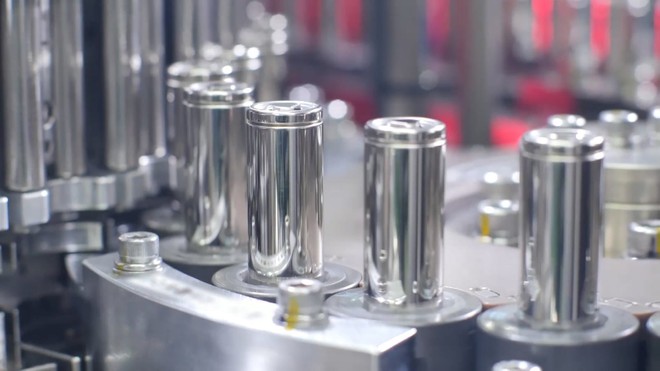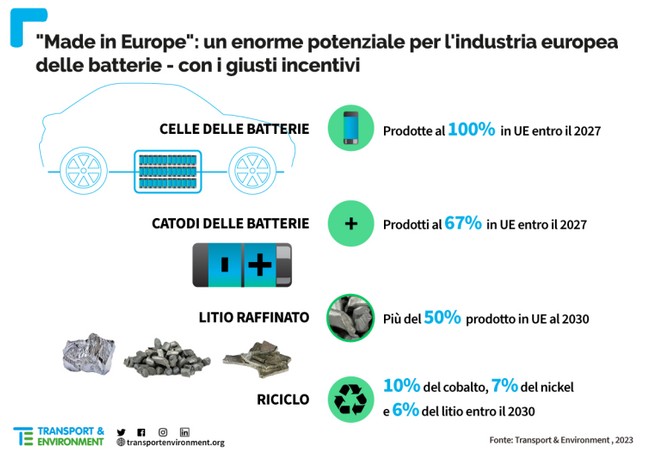
The theme of the independence of the European Union from China as regards the production of cells for electric car batteries it is; certainly very important. Of this topic he has not talked about it. been discussed a lot in recent times and we know that the European Union is working in more ways than one. directions to get enough production for automakers without having to depend on Chinese factories.
According to a report by Transport & Environment (T&E), this independence could come in 2027. This study shows that for that date, continental production will be limited. sufficient to satisfy 100% of domestic demand. The dependence on China, again from 2027, should also end for other battery components. In fact, the report highlights, two-thirds of the European demand for cathodes containing critical raw materials can be covered by domestic production, at least according to the data coming from the companies involved, including those of Umicore (in Poland), Northvolt (in Sweden) and BASF (in Germany).
However, the report underlines a very important fact and that is; that in the absence of a political initiative capable of counterbalancing the incentives to the sector promoted by the United States, Europe risks losing part of the investments along the car supply chain electricity.
THE RISKS
In practice, Transport & Environment wanted to warn about the risks of the Inflation Reduction Act (IRA) that the US government has prepared to support the national production of electric cars and the growth of the battery supply chain. In fact, according to the report, companies could decide to move the initiatives currently planned for Europe to the United States on the back of tax breaks and other subsidies provided for by the Inflation Reduction Act (IRA).

So, according to Transport & Environment, the European Union should equip itself with a European Sovereign Fundfor support for green technologies to be financed through common debt issuance. Going this route would ensure a level playing field. of conditions for all Member States, preventing countries with greater resources from taking advantage of them by offering generous public aid to their companies. However, according to T&E, this fund should offer support exclusively to the green production sectors affected by the US IRA, such as electric vehicles, batteries and renewable energy.
Unlike the funding provided for by the Next Generation EU, however, these new resources should be disbursed directly to companies, speeding up the process of absorbing funds, a particularly slow result in the execution of the European Recovery and Resilience Facility (RRF). The expenditure envisaged by the RRF itself, however, also lacks a strategic orientation, not to mention that the funds are often slow to reach the companies and cannot be used as bank guarantees unlike what which happens with IRA funding in the United States. Finally, EU state aid rules need to be streamlined by allowing green projects to access funds to increase production volumes as they already do. also in this case takes place in the USA.
So, with a just and prompt political action, the European Union could really achieve independence from China in terms of production of battery cells in 2027. According to T&E, it is; also destined to reduce dependence on the refining and processing of the metals used in batteries. By 2030, more than 50% of domestic demand for refined lithium will be available. be satisfied by the continental projects.
The supply of raw materials will take place within the country. from foreign or European mines, provided that high environmental and social standards are respected, as required by the EU Critical Raw Material Act currently under discussion in Brussels.
5G without compromise? Oppo Reno 4 Z, buy it at the best price from Amazon at 394 euros.